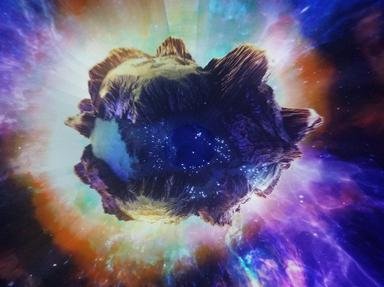Quiz Answer Key and Fun Facts
1. The headline for the March 15, 2010 edition of "Scientific American" read "Star set to collide with solar system". The orange dwarf star called Gliese 710 is considered 86% likely to collide with what part of our solar system within the next million and a half years?
2. In 2010, it was suggested that our sun may be part of a binary system, with an as-yet-unobserved dwarf star lurking nearby that might be responsible for an ostensible 26-million year cycle of mass extinctions on Earth. What nickname was given to this possible star?
3. According to current astronomical thought, a collision of two white dwarf stars may be responsible for the creation of stars in our galaxy whose spectra show very little of the most common element in the universe. What extremely light element are they missing?
4. In some parts of the sky, it appears that there are stars which are out of step with main sequence stars in terms of stellar evolution. What are these anomalous stars called?
5. Two stars that orbit each other are called a binary star system. Some binary systems have spectra which show periodic changes. What is the nickname for such a system, based on the currently-accepted explanation that their spectral variability is due to interacting stellar winds?
6. A computer simulation at the University of Amsterdam showed that, in dense star clusters, the heaviest stars tend to move towards the centre of the cluster, increasing their chances of colliding with each other, and forming a larger mass. This can lead to what has been termed 'runaway growth', which is speculated to be a possible mechanism for the formation of which of these celestial objects?
7. The merging of two neutron stars has been proposed as the source of short-duration GRBs. For what does the acronym GRB stand?
8. About 49 million years ago, in the galaxy called Messier 85, two ordinary stars collided, producing an explosion of a previously-unobserved nature that was detected in 2006. What is the name given by astronomers to this event?
9. A recent computer model suggests that an unusual feature observed near Supernova 1987A, a supernova in the Large Magellanic Cloud, may have been formed when two stars collided prior to the supernova event. What feature is being explained?
10. It is not only individual stars that can be seen to collide with each other. The Cartwheel Galaxy is thought to have been a spiral galaxy similar to our Milky Way before it experienced a collision with another galaxy. What galaxy seems to be on a collision course with the Milky Way?
Source: Author
looney_tunes
This quiz was reviewed by FunTrivia editor
crisw before going online.
Any errors found in FunTrivia content are routinely corrected through our feedback system.

